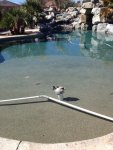Where I live, there are several "Community School" type programs which are held annually. Some are affiliated with local community colleges, while others are associated with municipalities and other varying levels of local government. Usually in the early spring, flyers will be mailed out listing different courses that are offered once or twice in the spring for a nominal fee, in areas from everything to landscaping and horticulture, CPR/first aid, basic home improvement topics, etc. These are courses that are taught by the highly credentialed on down to DIY folks who simply want to share some knowledge in an organized and didactic format. Although I am too late to submit to teach this year, I thought about doing a course in BBB next year. I feel as though I have a pretty good handle on it and most importantly, I know where to find the experts if needed (TFP) and also where to send folks for answers as well (also TFP).
Has anyone done this before? If so, what were your experiences? Did you Power Point it? I am called upon to teach rather often with my day job and I am very comfortable with Power Point.
Thanks!
Craig
Has anyone done this before? If so, what were your experiences? Did you Power Point it? I am called upon to teach rather often with my day job and I am very comfortable with Power Point.
Thanks!
Craig


